

Max Davies
2026 Ram 1500 Rebel review
5 Days Ago
The warmed-up Kia Cerato GT has some real boy racer vibes, and offers a serious amount of equipment for its $34,000 asking price
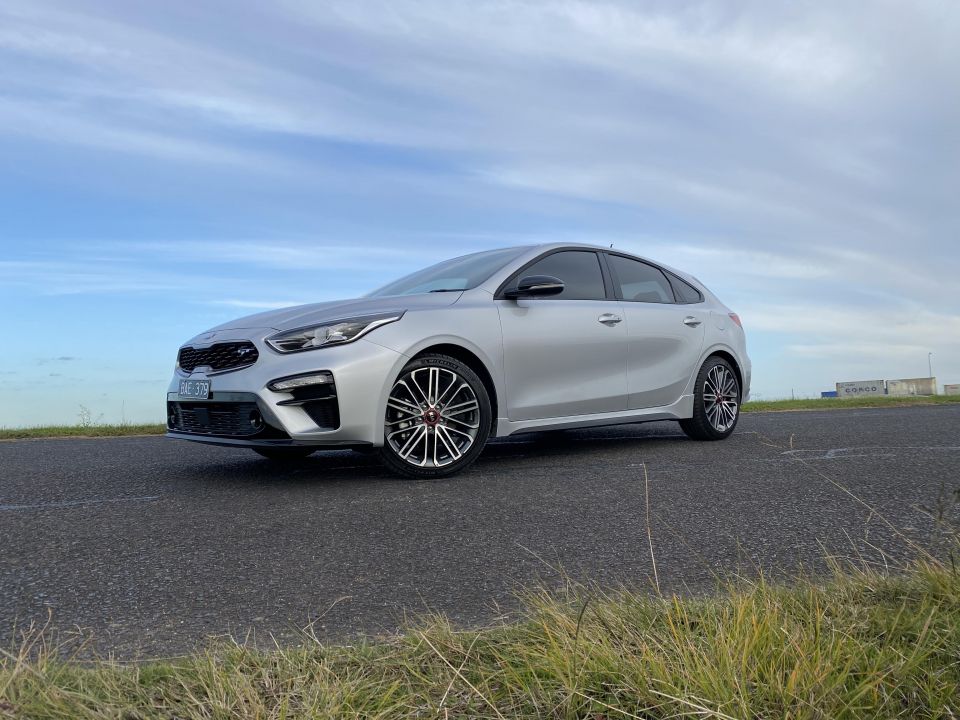
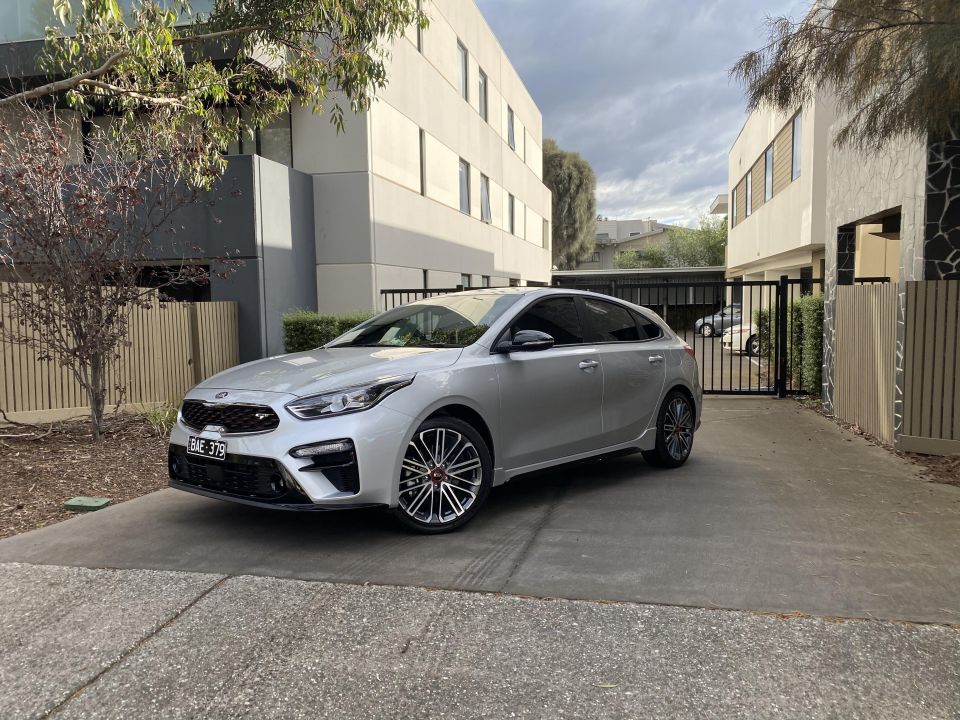

Senior Contributor
New from
$20,990
excl. on-roads

Senior Contributor
New from
$20,990
excl. on-roads


Senior Contributor
New from
$20,990
excl. on-roads

Senior Contributor
New from
$20,990
excl. on-roads
Quickly see how this car stacks up against its competition. Select any benchmark to see more details.
Where expert car reviews meet expert car buying – CarExpert gives you trusted advice, personalised service and real savings on your next new car.
Kia doesn’t offer a full-on hot hatch like the Hyundai i30 N, but it does make a more affordable and slightly toned-down model called the Kia Cerato GT.
This warmed-up hatchback – also available with a sedan body – is a mechanical twin to the Hyundai i30 N Line, and lines up against sporty hatches such as the Ford Focus ST-Line, Mazda 3 G25 range, and Honda Civic RS.

It might also be considered a larger and more practical, but slower, competitor to pocket rockets like the Volkswagen Polo GTI and Ford Fiesta ST – both more honed machines.
It’s also abundantly clear Kia is chasing a younger buyer: the firm Aussie suspension tune, bright red cabin lighting, body kit, and artificially ‘enhanced’ engine note, are uncompromisingly sporty touches.
And in typical Kia fashion, it’s an absolute bargain considering the features you get as standard. Sounds like a good start!
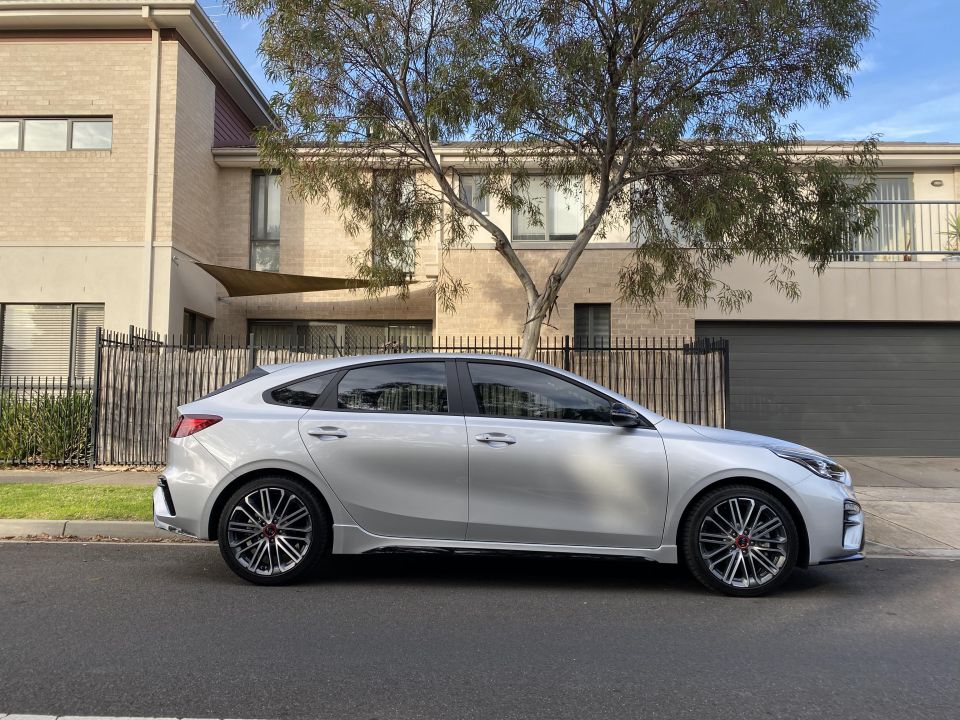
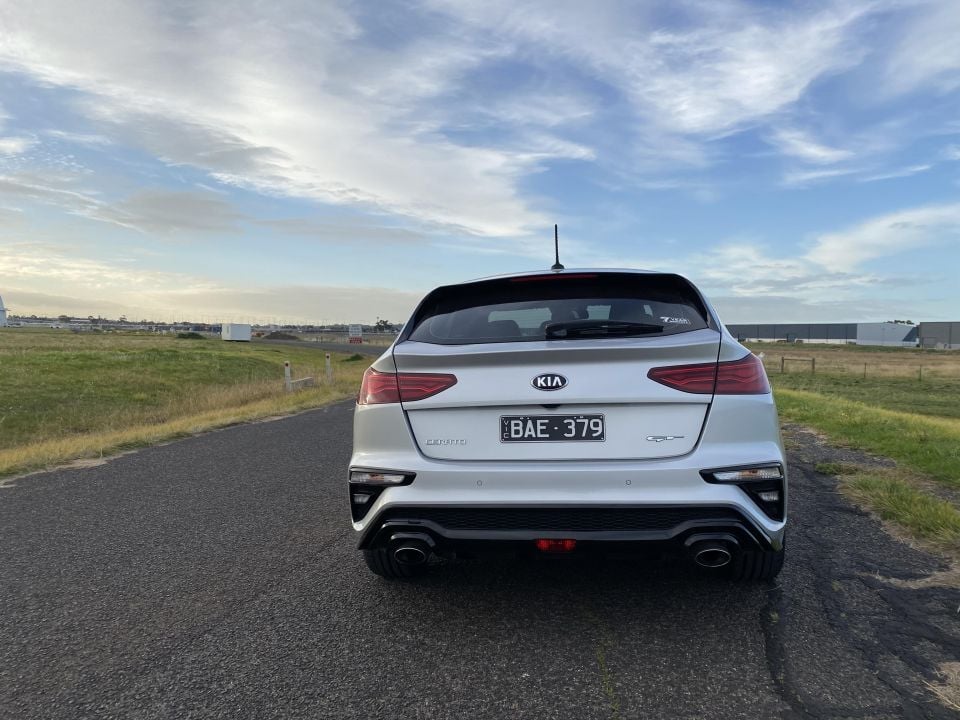

This top-of-the-range Kia Cerato is available for $33,990 drive-away, though its list price is technically $33,490 before on-road costs for comparison purposes.
Pricing is spot on, nestled among the i30 N Line (30,040 before on-roads) and N Line Premium ($35,590 before on-roads), Civic RS ($33,540 before on-roads), Mazda 3 G25 GT ($35,090 before on-roads), and Focus ST-Line ($32,040 before on-roads with the optional active safety and design packs to specify it to Kia’s level).
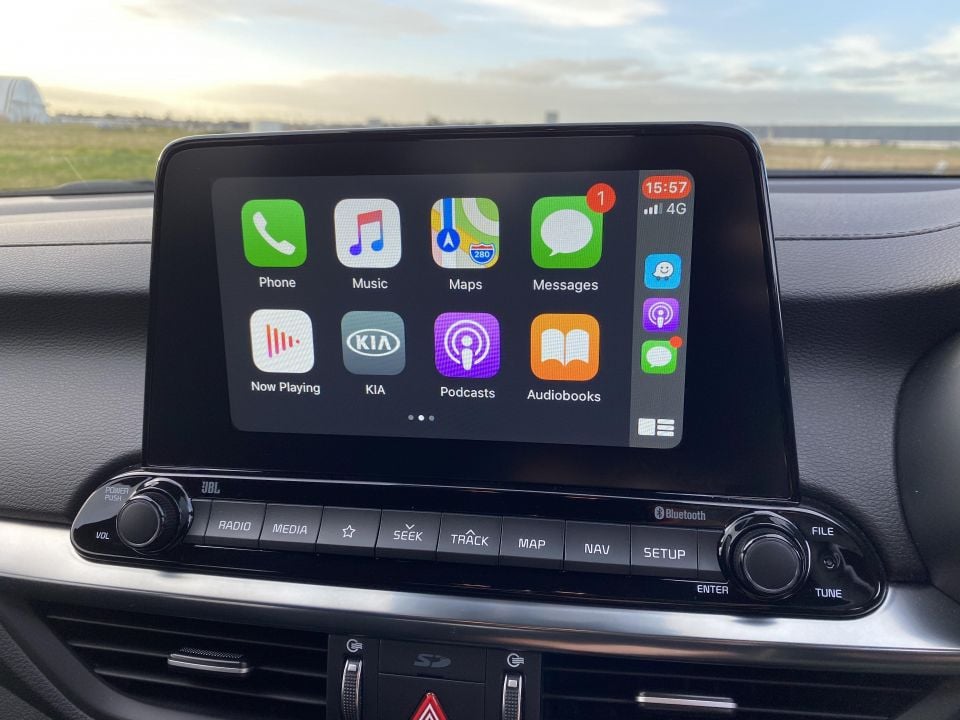


Buy your new car without the stress. It's fast, simple and completely free.

Great service from Travis and team, second time I have used this business would not hesitate to recommend them to anyone
Craig C.
Purchased a Ford Ranger in Sunshine Coast, QLD
CarExpert helped Craig save $7,224 on his Ford Ranger, now let us save you on your next new car.
Get your BEST priceOn the outside are 18-inch alloys wrapped in high-quality Michelin Pilot Sport 4 tyres, a space-saver spare, automatic LED headlights, tail lights and daytime running lights, a proximity key, body kit, auto-folding side mirrors, and dual exhaust outlets. Unlike some rivals you cannot option a sunroof.
Inside you get nicely bolstered leather seats with heating and ventilation, memory presets for the driver, dual-zone climate control, a wireless phone charger, an 8.0-inch touchscreen, digital radio, Bluetooth/USB, satellite navigation with SUNA updates, wired Apple CarPlay and Android Auto, and an eight-speaker audio system supplied by JBL.

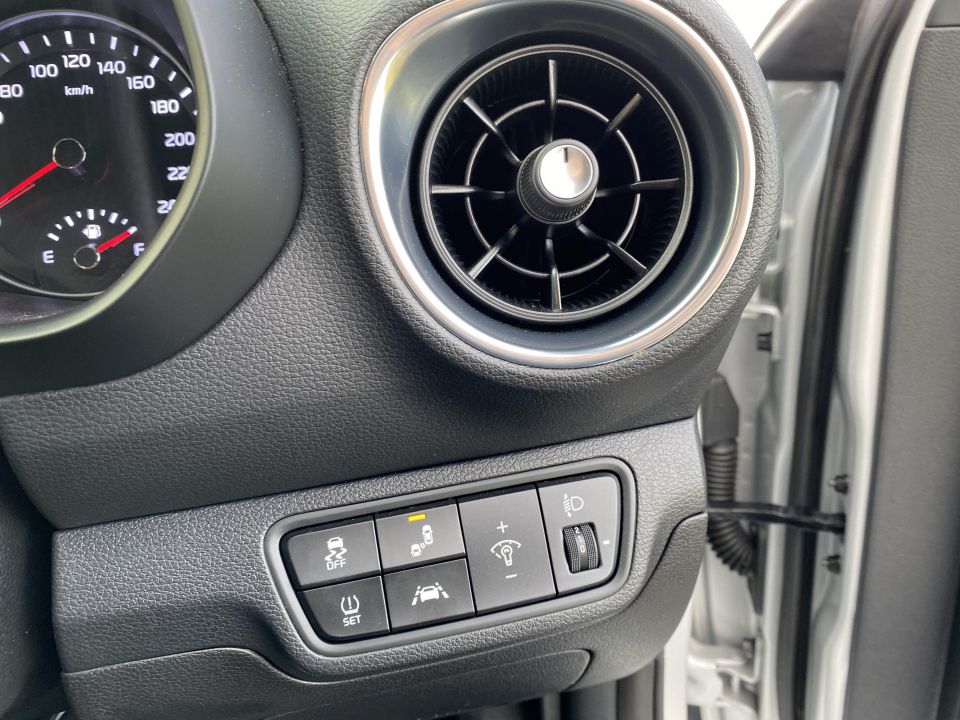

Crash tester ANCAP awarded the Kia Cerato five stars in 2019. It scored 90 per cent for adult occupant protection, 83 per cent for child occupant protection, 72 per cent for pedestrian protection, and 73 per cent for safety assist.
Safety features include six airbags, parking sensors at both ends, a reversing camera, autonomous emergency braking (AEB) that also detects pedestrians and cyclists, blind-spot detection, rear cross-traffic alert, lane-keeping aid with steering assist, driver attention alert, and active cruise control with a speed-limiter function.
“Tests of the AEB system showed good performance at highway speeds, with collisions avoided or mitigated in most scenarios. Overall, AEB system effectiveness for higher speed scenarios was rated adequate,” said ANCAP.
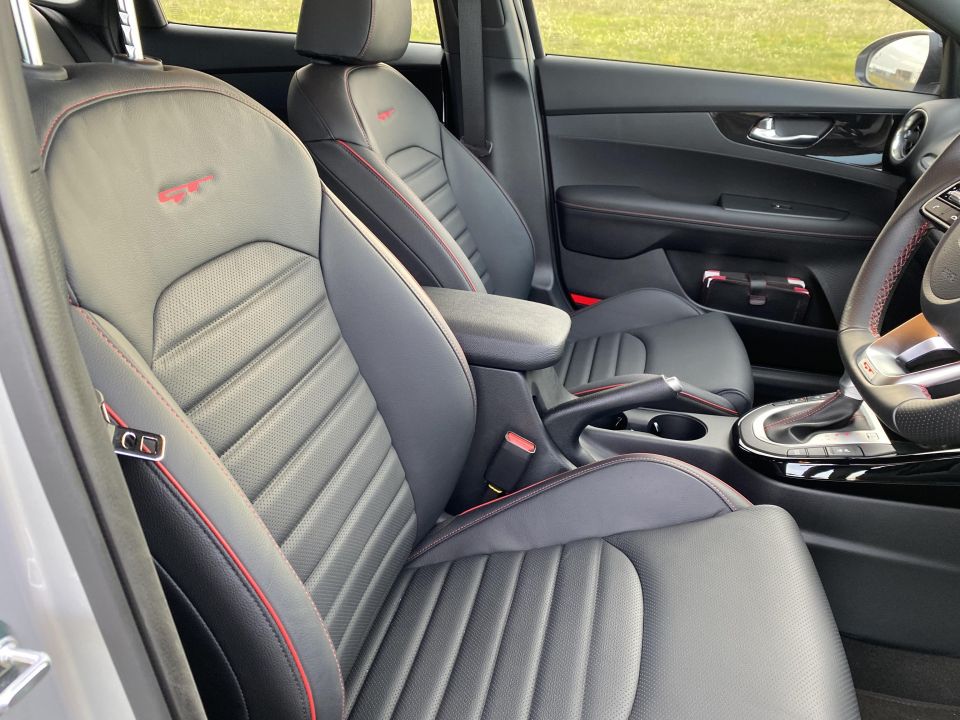
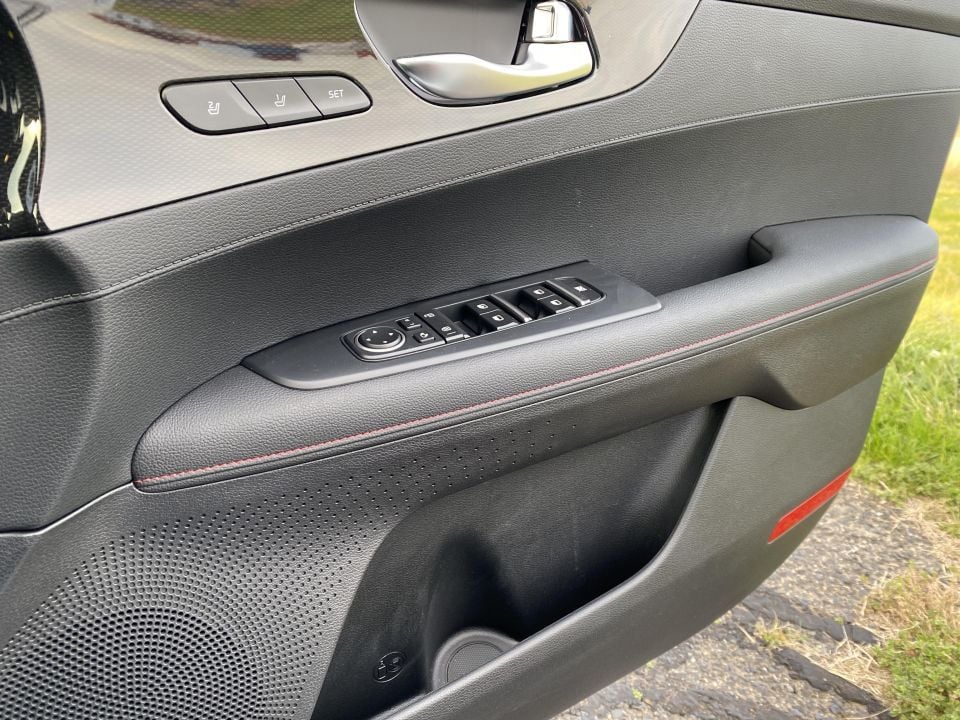
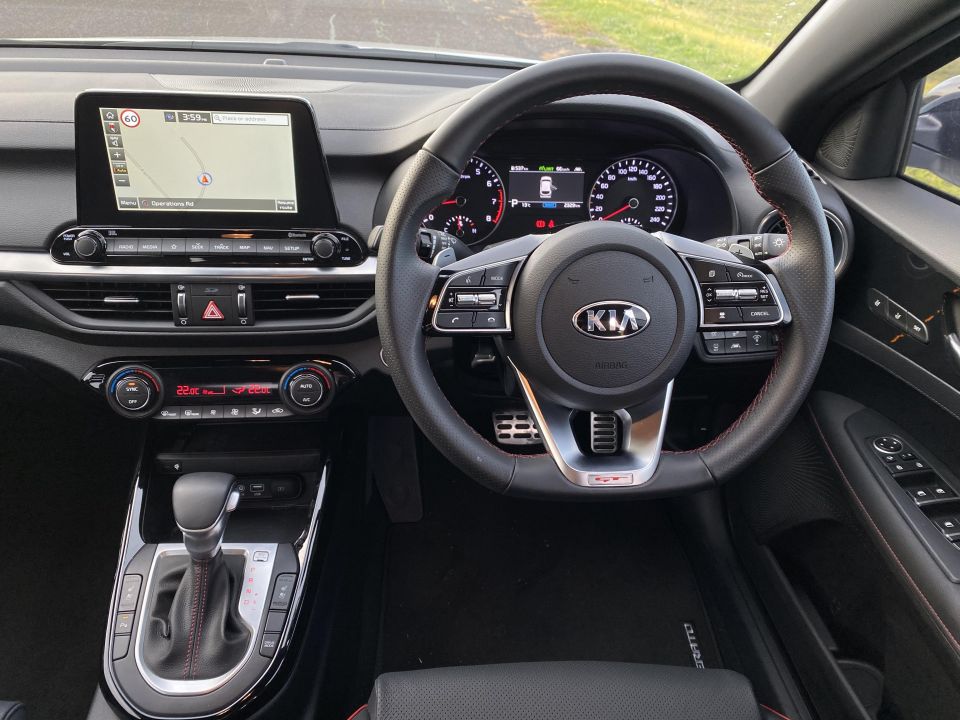
There’s definitely a colour theme: black seats and surfaces, with red stitching everywhere, and a red lighting signature that certainly create an angry ambience at night.
The leather seats comfortable, though I’d welcome a smidgen more side bolstering. The fact they’re electric, heated and cooled, and have memory presets its brilliant for a cheap car like this.
The driving position is quite low, and there’s ample steering wheel adjustment. While you don’t get a head-up display, the analogue gauges are highly legible and the digital speedo ditto. The steering wheel itself looks and feels great, with tactile buttons and quality leather wrapping.
While there are some hard plastics used lower on the dash and along the transmission tunnel, the cabin is inarguably well put-together. The alloy pedal caps and silver highlights along the dash liven things up, albeit just a smidgen.
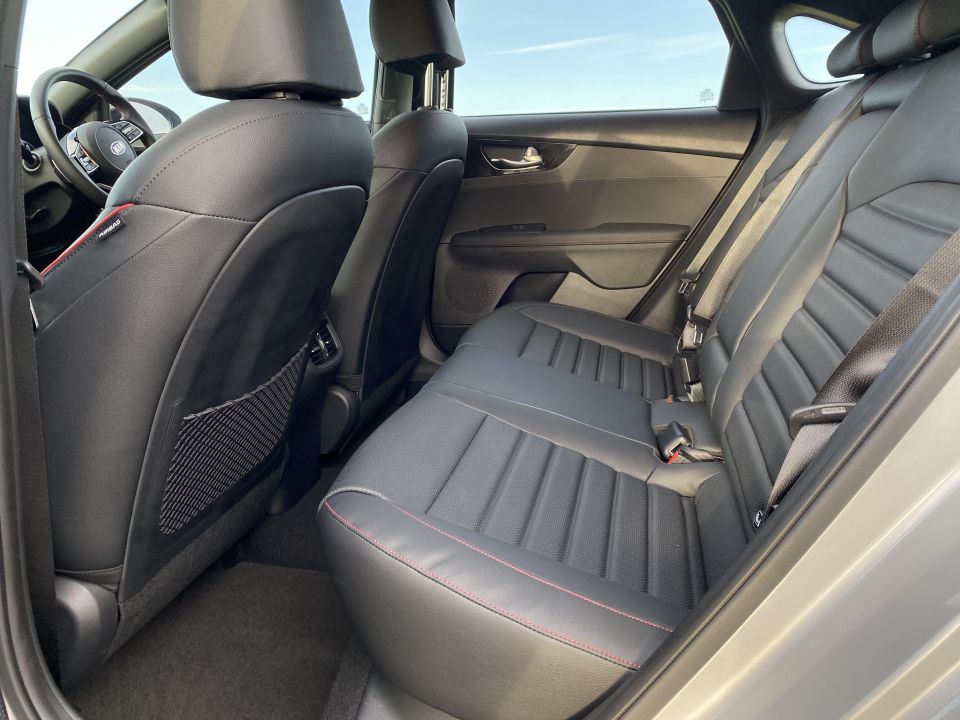
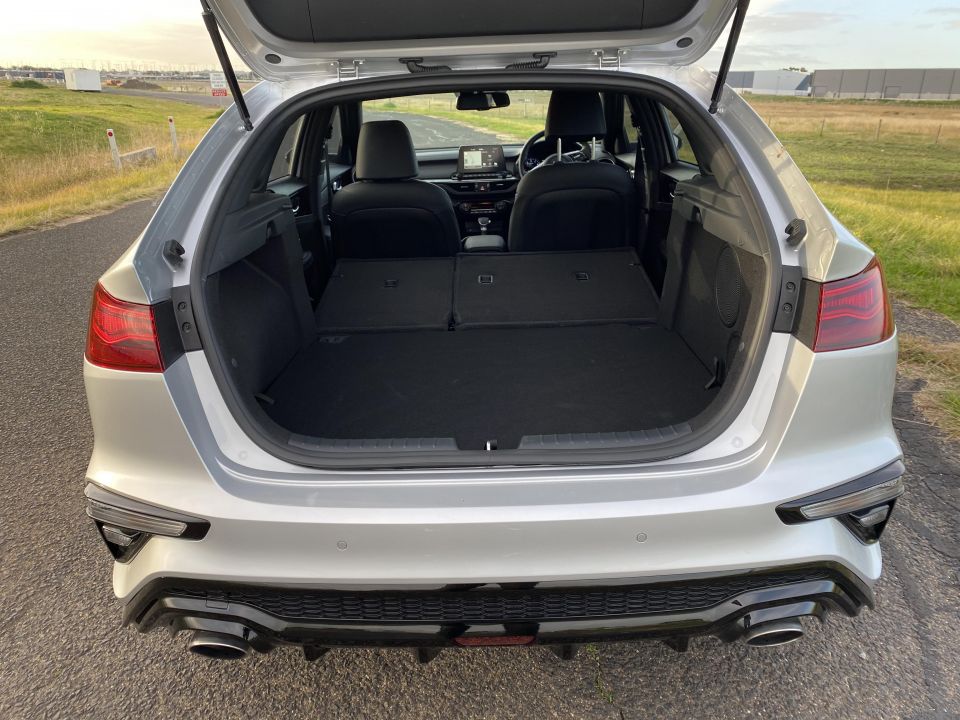
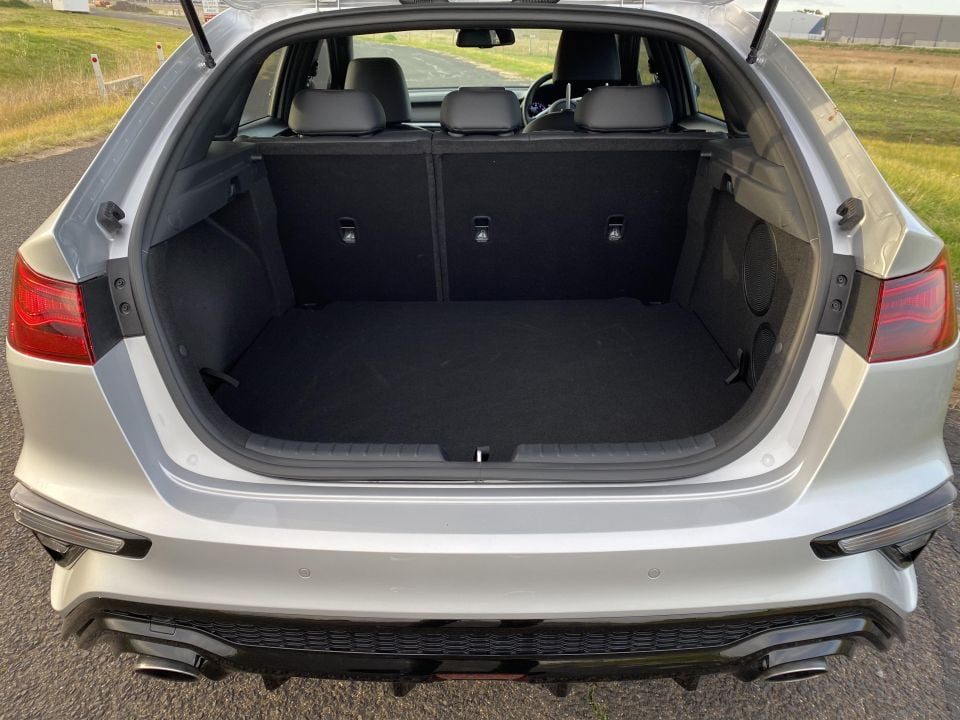
The infotainment is good, although the setup in the Seltos SUV is a little slicker, and takes up more dash real estate. The sat-nav has live updates, the reversing camera is acceptable, having phone mirroring is always ideal since you can view Google Maps on the centre screen, and the JBL audio system sounds good.
Back-seat space is quite generous for the segment, certainly better than most rivals aside from the super-spacious Honda Civic. Anyone under 185cm will be perfectly comfortable, and the presence of rear vents is most welcome.
For those with little kids, there are two ISOFIX anchor points and three top tether points located in the seat-backs.
Despite getting independent suspension (multi-link) unlike the base models’ torsion beam axle, the boot space is unaffected. The hatch has 428L of boot space, a rigid removable parcel shelf/cargo cover, and an under-floor space-saver spare. The back seats also fold down to liberate more storage space.



A 1.6-litre turbocharged petrol familiar from the Hyundai i30 N Line and Veloster models, making 150kW of power at 6000rpm and 265Nm of torque between 1500 and 4500rpm.
It’s front-wheel drive, and mated solely to a seven-speed dual-clutch automatic transmission (DCT) with paddle shifters. There’s no manual option, unlike the i30 N Line and Mazda 3 G25 series.
Combined-cycle fuel consumption is listed as 6.8 litres per 100km, and it’s rated to run on 91 RON fuel and E10. Over a mixed-loop including some hard driving I managed 8.6L/100km.

The engine offers relatively snappy performance, as our easily achieved 7.3-second 0-100km/h time showed. Its power-to-weight ratio of 107.5 kW per tonne shades size rivals.
Like most small-displacement turbo engines, it has plenty of torque on tap enabling good rolling response. The trade off is that naturally aspirated engines like the Mazda’s are more fun to rev out to the limiter.
There are various driving modes to play with that fettle the steering weight and drivetrain behaviour, the two notable ones being Smart (where the car decides which mode to drive in, for instance going into Sport when you mash the throttle and Eco when you lift off) and Sport (activated by putting the gear shifter into manual mode).
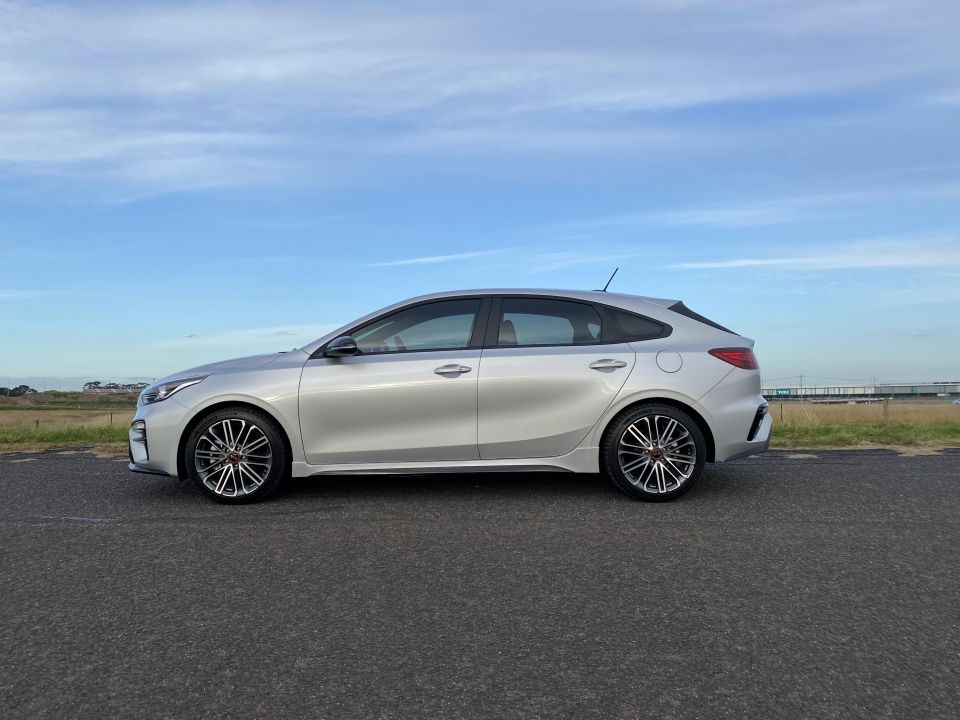
Doing this latter action clearly ramps up the amount of engine noise piped into the cabin too. It sounds artificial, because it is, and whether you like this touch or not possibly depends on how much Gran Turismo you play. It doesn’t sound all that satisfying to me.
The Kia Cerato GT is very good at putting its power to the road, with those sticky tyres hooking up quickly, and dry-road axle tramping and torque steer mitigated. The stability control system also stays largely out of affairs.
In most driving scenarios, the DCT proved fine, and it doesn’t have too much hesitation in urban confines. Yet it doesn’t have the rapid, rifle-bolt shifts of a Volkswagen DSG, and fails to downshift aggressively enough when braking into a corner, even in Sports mode.
I want some more theatre from my performance transmission. Even downshifting manually feels a little slurred.
The presence of a transmission-fluid temperature gauge in the trip computer is interesting. I wonder if it’s prone to overheating? I drove the wheels off, and also did lots of stop-start commuting, and didn’t get close to that point.
One of the Kia Cerato’s strong points is its handling. Kia’s Australian division specifically engineers the springs, shocks, bars and bushes in Sydney for our roads, because typical Korean tunes are too soft and pillowy for our tastes.
It handles quite tenaciously, taming front-drive understeer despite lacking a limited-slip diff. You can approach a tight corner quite hot, and feed in power a little early on exit, and the Cerato responds as you’d like it to. Those tyres certainly help with grip.
The steering has significant ‘weight’ or resistance, but is direct at the same time, and the body stays very flat against lateral loads. The fitment of independent rear suspension in this grade bolsters road holding over choppy surfaces too.
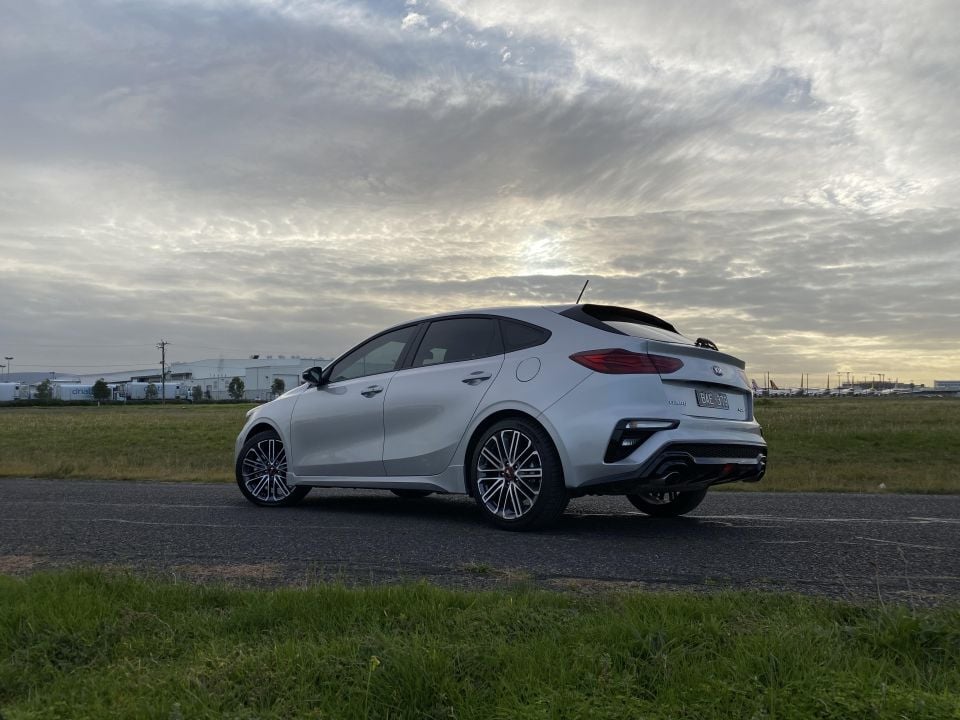
Kia’s engineers have clearly put sportiness at the forefront because the ride is very firm, especially at low speeds over corrugations. The fixed dampers control brittleness over sharp hits, but the springs don’t allow much body movement. I personally don’t mind a firm and sporty ride, but some people might find it too taut for a daily driver.
The active safety functions all worked as intended. The steering assist nudges you back between road lines nicely, and the cross-traffic alert nullifies any issues backing out of a spot given the sizeable rear-pillar blind spots.
The active cruise control in comfort roads is a little too tentative though, taking a while to match the speed of the car ahead and occasionally misreading the situation. Luckily for urban driving you have a speed-limiter instead.
Kia was the first brand with a standard seven-year and unlimited kilometre warranty, though brands like Honda, Mitsubishi and SsangYong have followed suit. You also get roadside assist for the warranty period as long as you use any Kia dealer for servicing.
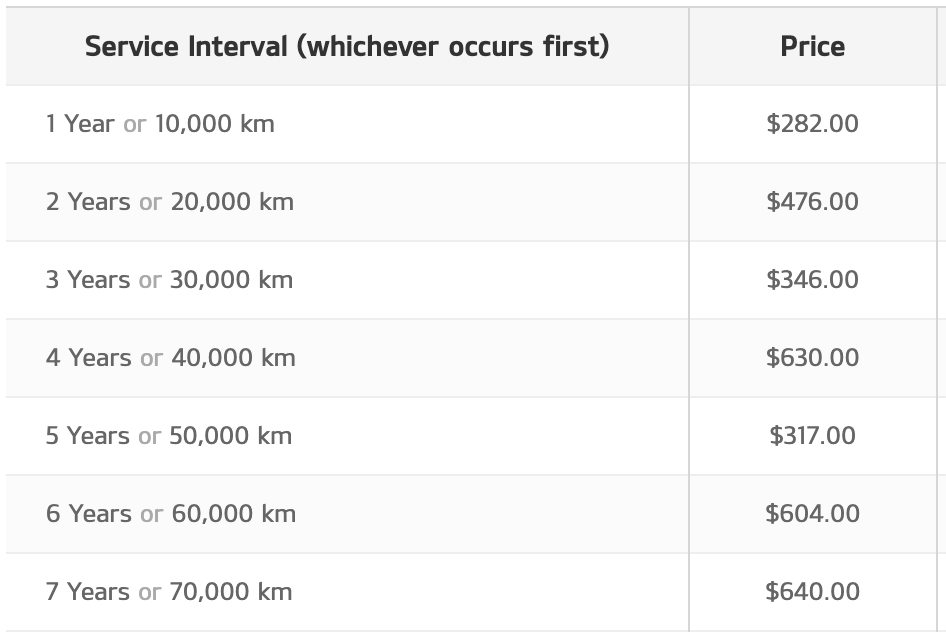
The services are capped for seven years, too, although the 10,000km (or annual) intervals are 5000km too short for our liking. The first seven visits are currently priced at: $282, $476, $346, $630, $317, $604, and $640. There are no other charges, unlike some other brands’ service plans.
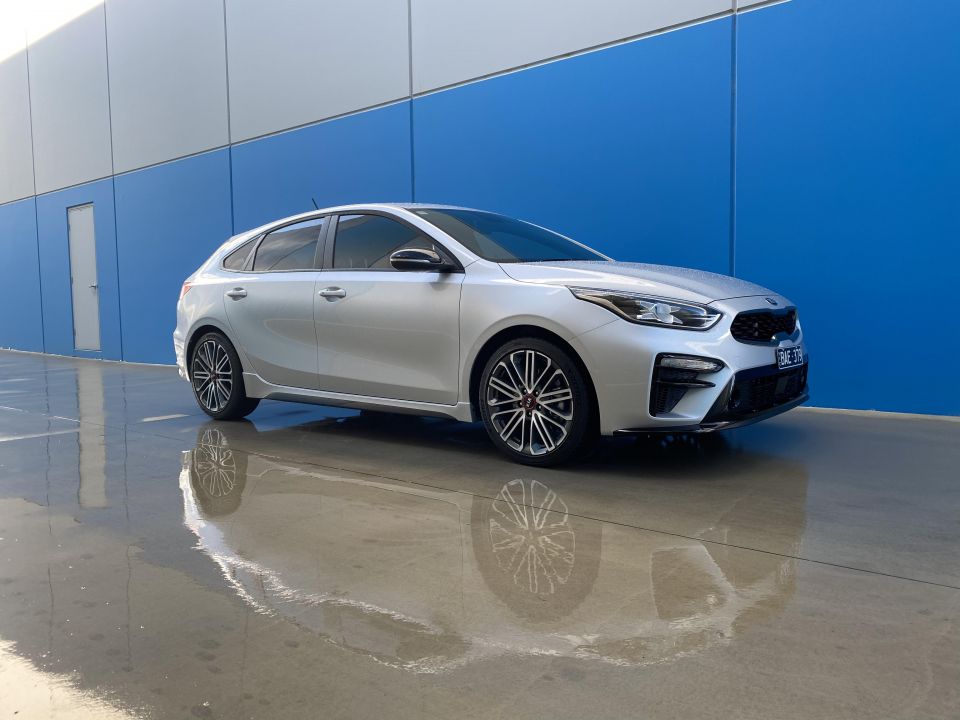
Buy your new car without the stress. It's fast, simple and completely free.

Great service from Travis and team, second time I have used this business would not hesitate to recommend them to anyone
Craig C.
Purchased a Ford Ranger in Sunshine Coast, QLD
CarExpert helped Craig save $7,224 on his Ford Ranger, now let us save you on your next new car.
Get your BEST priceThere are plenty of things to like here.
The Kia Cerato GT makes a mild racket, looks the goods, is brimming with cabin tech, and handles tenaciously. And I like that Kia offers an unabashedly firm ride, weighty steering, and a red-on-black sporty cabin. At least it’s focused.
If the seven-speed DCT was more aggressive and decisive near the limit, and its servicing intervals more generous, it’d be a hard car to poke holes in. Even so, this is one premium small car that deserves all the sales success it gets.
Where expert car reviews meet expert car buying – CarExpert gives you trusted advice, personalised service and real savings on your next new car.


Max Davies
5 Days Ago


Max Davies
4 Days Ago


Neil Briscoe
3 Days Ago


Max Davies
2 Days Ago
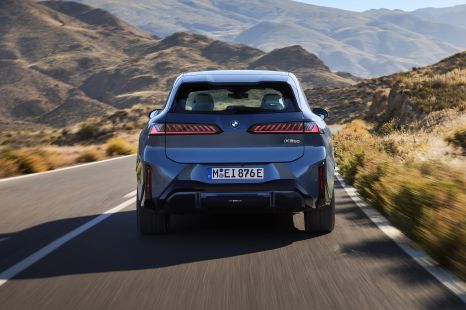

Alborz Fallah
20 Hours Ago


Damion Smy
20 Hours Ago